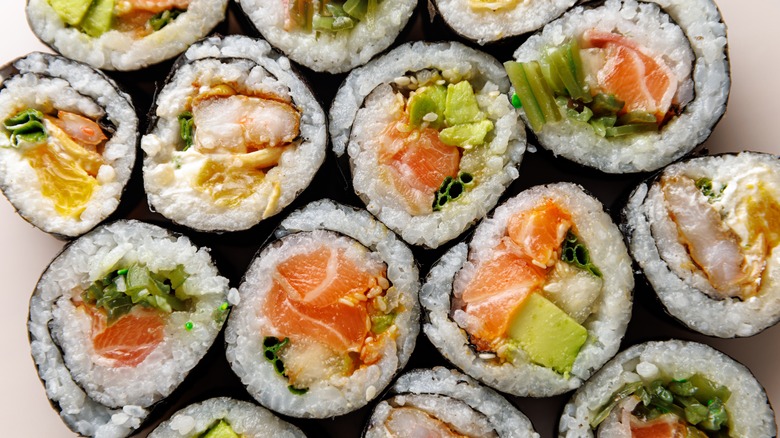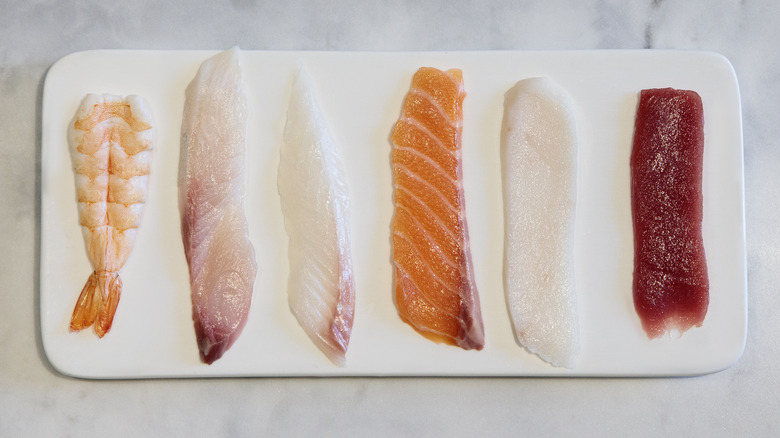Why You Should Never Use Raw Cod When Making Homemade Sushi
Preparing to make sushi recipes at home starts with choosing the right fish. No matter what fish you like, keep in mind that raw cod is never advisable. For a start, cod doesn't taste all that great raw due to its high moisture content — the more watery the fish, the less condensed the flavor — so your homemade sushi won't be missing out on much. But more importantly, cod fish — including Atlantic cod, Pacific cod, pollack, and haddock — tend to be infected with parasites that can cause health issues if consumed.
The main parasite in raw cod are anisakid worms, which, without proper treatment, can latch onto your digestive organs and cause a plethora of nasty health problems, from nausea to life-threatening allergic reactions. But it doesn't always have to be a worm casually poking out from the fish flesh — a sight many unfortunate cod fish eaters have seen, though you might not want to Google that! Fish parasites are also sometimes invisible to the naked eye.
Even if you've eaten raw cod before without problems, there's no guarantee that the next one will be parasite-free. Of course, the risk becomes much lower with sushi-grade or sashimi-grade cod if you can find a fishmonger that follows FDA recommendations for eliminating parasites in raw fish, which includes freezing. However, it is hard to guarantee sushi-grade if you're buying from the market, and most home freezers aren't up to the task, either. So, you're better off saving that cod fish for these crave-worthy cod recipes where it'll be thoroughly cooked!
Picking the right fish for your sushi
For a safe and enjoyable homemade sushi experience, we recommend sticking to fish that are less likely to carry parasites. Farmed salmon, turbot, sea bass, gilthead sea bream, tuna, and marine rainbow trout are all good choices. Skip mackerel, branzino, monkfish, mullet, herring, wild salmon, or anything you catch in the wild for your home-made sushi — these are better off spending time in the pan or on the grill before hitting your plate.
If possible, buy sushi-grade fish from reliable suppliers with a quick turnover of stock. While there is no official regulatory body that evaluates raw fish for safe consumption, fish labeled as sushi-grade is more likely to have been handled and stored properly by the fishmonger. This means it's more likely to be fresh. If you're buying whole fish, check if they have clear, bright eyes that are slightly bulging, firm flesh, vibrant colors, and a clean, ocean-like smell. Any packaging should be intact, free from leaks, and should not contain any excess fluid.
Besides looking for a sushi-grade or sashimi-grade label, you can ask sellers about the origin as well as the handling procedure to make sure you're buying the freshest fish. If possible, choose fish that has been sustainably sourced. This often goes hand-in-hand with high standards of hygiene and stricter quality controls, so there's a lower risk of parasites.

